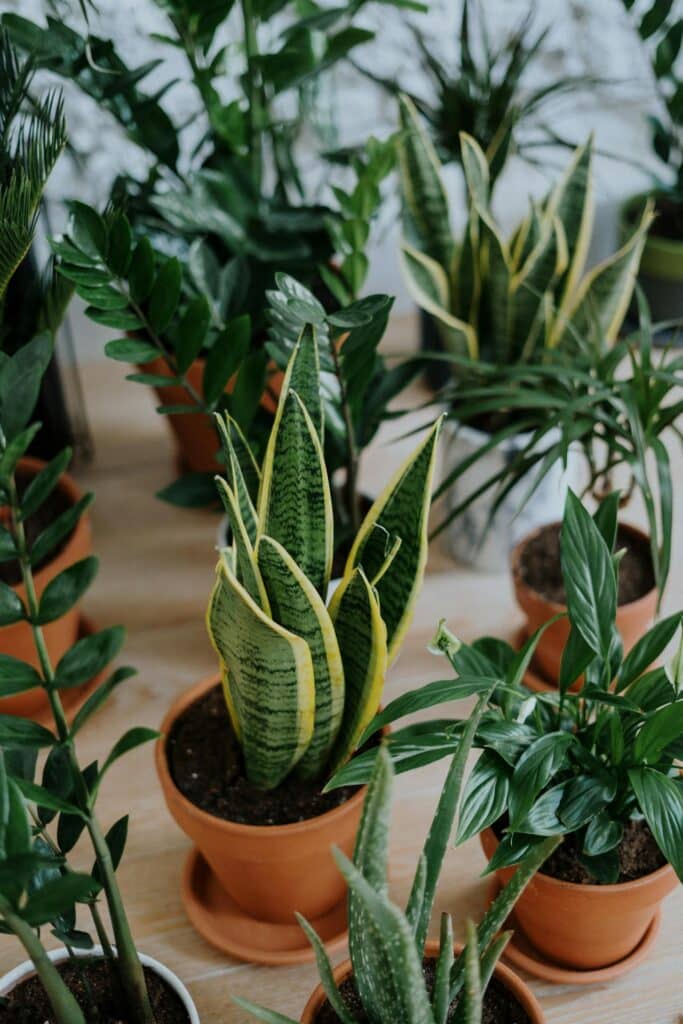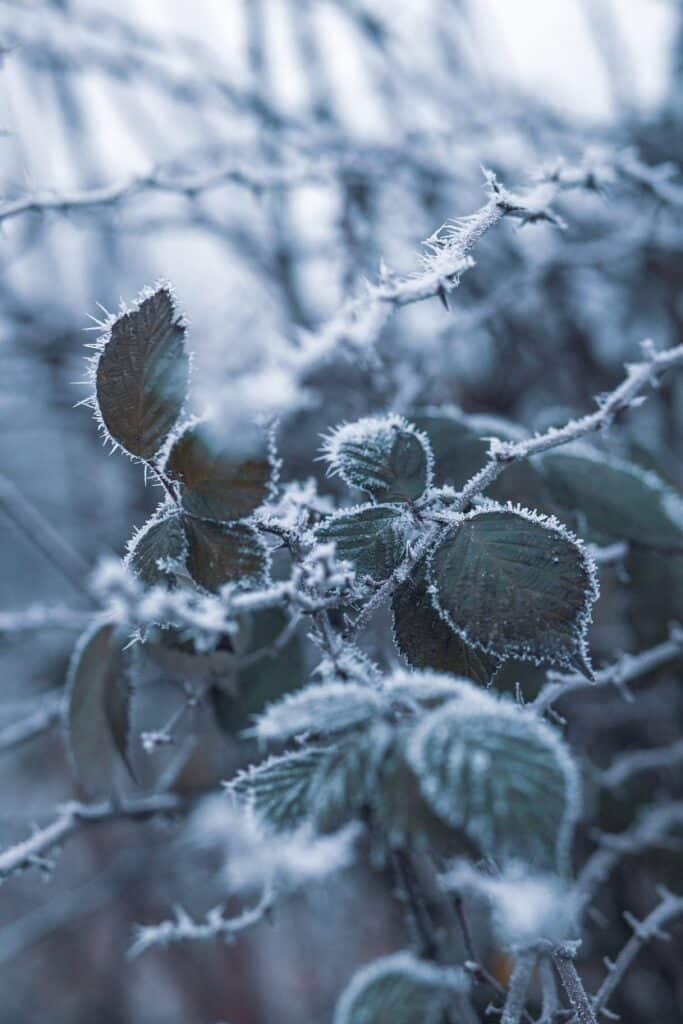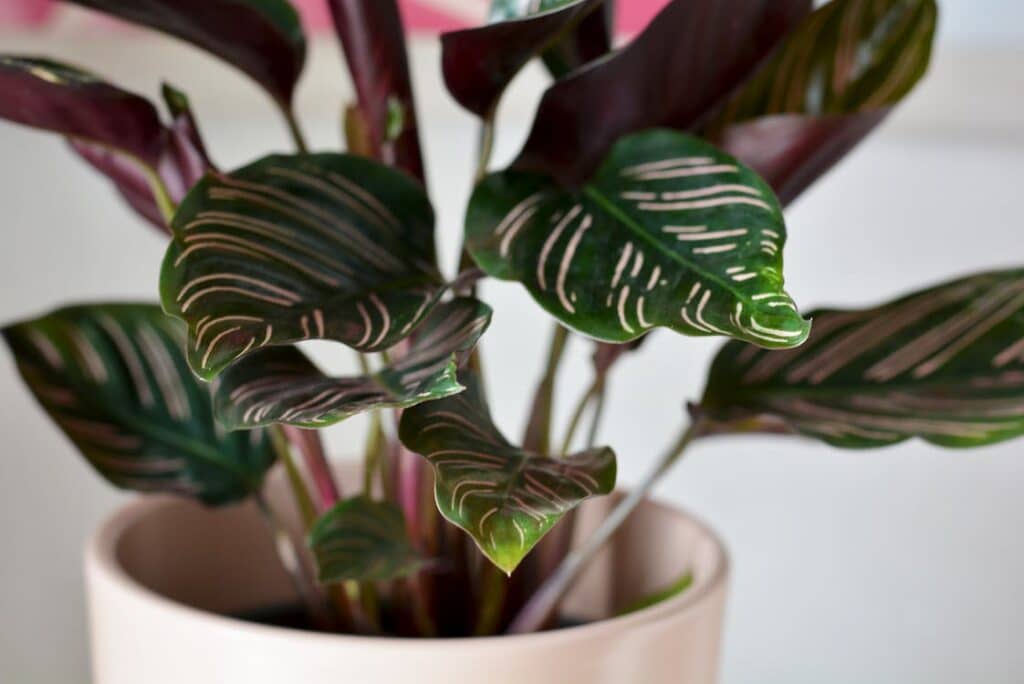Are you passionate about celebrating Christmas in an eco-friendly way? Look no further! This article introduces you to five marvelous house plant that looks like a Christmas tree.
By opting for these eco-friendly alternatives, you will add a touch of natural beauty to your holiday décor and do your part to protect the environment. So, discover these charming plants that will bring a festive spirit into your home while keeping sustainability in mind.

The importance of Choosing an Eco-friendly Christmas Tree Substitutes
The holiday season is synonymous with the tradition of decorating Christmas trees. However, the environmental impact of using traditional trees for this purpose cannot be ignored. It’s essential for us to consider eco-friendly alternatives that can help us celebrate the festivities while minimizing our carbon footprint. By opting for eco-friendly Christmas tree substitutes, we can contribute to preserving our planet and creating a more sustainable future.
Understanding the environmental impact of traditional Christmas trees
Traditional Christmas trees, predominantly harvested from forests, have a significant environmental impact. Cutting down trees for a short-lived decoration, only to discard them afterward, contributes to deforestation and habitat destruction. Furthermore, the transportation and disposal of these trees also add to carbon emissions, further exacerbating climate change.
Why it’s essential to opt for eco-friendly alternatives
By choosing eco-friendly house plant that looks like a christmas tree, you can minimize environmental harm and promote sustainability. Eco-friendly alternatives not only reduce the demand for traditional trees but also offer additional environmental benefits. These alternatives can be reused or repurposed, ensuring that their impact is far less detrimental than that of traditional trees. Additionally, eco-friendly substitutes contribute to indoor air quality, provide habitat for wildlife, and offer a unique and beautiful touch to your holiday decorations. Let’s explore some eco-friendly Christmas tree substitutes that you can consider.
Rosemary Tree as an Eco-friendly Substitute
Attributes of a Rosemary Tree
A Rosemary Tree serves as a perfect eco-friendly substitute for a traditional Christmas tree. Rosemary, a fragrant herb commonly used in cooking, can be cultivated into a small tree shape, making it an ideal choice for the holiday season. These compact trees possess charming, needle-like leaves that resemble those of traditional Christmas trees, giving them an authentic and festive appearance. Furthermore, the delightful aroma of rosemary adds a unique scent to your living space, enhancing the holiday ambiance.
Environmental Contribution of using Rosemary Tree
Choosing a Rosemary Tree as your Christmas tree substitute offers numerous environmental benefits. These plants are low-maintenance and require minimal water, reducing your overall water consumption. Additionally, Rosemary Trees can be planted outdoors after the holiday season, contributing to reforestation efforts and providing a habitat for birds and insects. By opting for a Rosemary Tree, you can actively participate in preserving the environment while enjoying the beauty and fragrance of a traditional Christmas tree.
Tips on Caring for a Rosemary Christmas Tree
To ensure the longevity of your Rosemary Tree, it’s important to provide proper care. Place your Rosemary Tree in a well-lit area, preferably near a sunny window. Water the plant when the top inch of soil feels dry, being careful not to overwater. Additionally, pruning the tree regularly will help maintain its shape and encourage healthy growth. Your Rosemary Tree will thrive throughout the holiday season and beyond with proper care.

Adopting the Norfolk Island Pine as a Christmas Tree
Characteristics of Norfolk Island Pine
The Norfolk Island Pine is another excellent eco-friendly substitute for a traditional Christmas tree. Native to the South Pacific, this evergreen tree features symmetrical branches and soft, needle-like leaves. Its natural conical shape makes it an ideal choice for adorning with ornaments and lights, providing a festive and elegant touch to your holiday decor. The Norfolk Island Pine can be easily purchased or grown indoors, making it a convenient and sustainable choice for Christmas celebrations.
Environmental Advantages of using Norfolk Island Pine
Choosing a Norfolk Island Pine as your Christmas tree substitute offers several environmental advantages. These trees can be nurtured and kept as indoor plants throughout the year, providing lasting beauty and helping purify your home’s air. By opting for an indoor tree like the Norfolk Island Pine, you contribute to improved indoor air quality, which is particularly beneficial during the winter season when we spend more time indoors. Moreover, these trees can be enjoyed for several holiday seasons, reducing waste and the demand for cut trees.
Guide for maintaining a Norfolk Island Pine Christmas Tree
To ensure the health and longevity of your Norfolk Island Pine, provide it with a well-drained potting mix and place it in a spot with bright, indirect sunlight. Avoid placing it near drafts or heating vents, as these can lead to drying out of the tree. Regular watering is necessary to keep the soil evenly moist, but be cautious not to overwater as this can lead to root rot. The Norfolk Island Pine thrives in humid conditions, so consider misting the tree with water to provide additional moisture. With proper care, your Norfolk Island Pine Christmas tree will bring joy and warmth to your holiday celebrations for years to come.
Exploring the Elegance of Lemon Cypress
Features of Lemon Cypress
The Lemon Cypress is a stunning evergreen plant that can be utilized as an eco-friendly alternative to a traditional Christmas tree. With its vibrant green foliage and slender, columnar shape, the Lemon Cypress adds elegance and sophistication to any holiday decoration. Its lemon-scented leaves emit a refreshing fragrance, creating an inviting atmosphere in your home during the festive season. The Lemon Cypress is a versatile plant that can be displayed in various sizes, ranging from tabletop arrangements to larger floor-standing trees.
Environmental Benefits of having Lemon Cypress
Opting for a Lemon Cypress as your Christmas tree substitute brings various environmental benefits. Lemon Cypress plants are easily grown in containers and can be kept indoors or on a patio, minimizing the need for tree harvesting. By choosing this eco-friendly alternative, you reduce the demand for traditional trees and contribute to the preservation of forests. The Lemon Cypress also acts as a natural air purifier, filtering out pollutants and improving the overall air quality in your home. Its ability to thrive in containers ensures that it can be enjoyed for many years, reducing waste and promoting sustainability.
Proper Care and Maintenance for Lemon Cypress Christmas Tree
To keep your Lemon Cypress in optimal condition, place it in a bright location with partial sunlight. Water the plant when the top inch of soil feels dry, providing sufficient moisture but avoiding waterlogging. It is essential to maintain moderate humidity levels, especially in heated indoor environments. Misting the plant occasionally or placing it near a humidifier can help create the ideal conditions. With regular pruning and care, your Lemon Cypress will retain its beauty and fragrance, making it a delightful addition to your eco-friendly holiday celebrations.

Bringing Life to Christmas with Jade Plant
Identifying Traits of Jade Plant
The Jade Plant, also known as Crassula ovata, is a succulent that can be used as a unique and eco-friendly substitute for a traditional Christmas tree. With its fleshy, jade-green leaves and sturdy stems, the Jade Plant brings a touch of natural beauty to your holiday decorations. Known for its resilience and longevity, this plant symbolizes good luck and prosperity, making it an auspicious choice for the festive season. The Jade Plant can be cultivated as a small tree and adorned with ornaments and lights, creating a captivating and eco-conscious Christmas centerpiece.
How Jade Plant Contributes to the Environment
Choosing a Jade Plant as your Christmas tree substitute offers several environmental contributions. Succulents, like the Jade Plant, are exceptionally water-efficient and require minimal irrigation. By opting for a plant that thrives in arid conditions, you reduce water consumption and promote water conservation. Additionally, the Jade Plant is low-maintenance and can be enjoyed as a houseplant throughout the year, contributing to air purification and creating a healthier indoor environment.
Best Practices for Taking Care of Jade Plant Christmas Tree
To ensure the well-being of your Jade Plant Christmas tree, place it in an area with plenty of bright, indirect sunlight. This plant prefers well-draining soil, so make sure to use a suitable potting mix for succulents. Water the plant thoroughly but infrequently, allowing the soil to dry out between waterings. The Jade Plant thrives in moderate humidity levels, so avoid placing it in areas with excessive moisture. With proper care and by following these guidelines, your Jade Plant Christmas tree will flourish and bring vitality and charm to your eco-friendly holiday celebrations.
The Unique Qualities of Fiddle Leaf Fig as a Christmas Tree Substitute
Distinctive features of Fiddle Leaf Fig Plant
The Fiddle Leaf Fig, scientifically known as Ficus lyrata, is an eye-catching plant that can be an eco-friendly substitute for a traditional Christmas tree. With its large, glossy leaves and sculptural form, it adds elegance and grandeur to any holiday setting. Its unique shape and texture mimic traditional tree branches, making it a visually appealing alternative. The Fiddle Leaf Fig brings a natural and contemporary ambience to your holiday decor.
Environmental Implications of using Fiddle Leaf Fig
Opting for a Fiddle Leaf Fig as your Christmas tree substitute offers significant environmental implications. These plants are typically grown indoors, significantly reducing the need for tree harvesting and their associated environmental impacts. Using a Fiddle Leaf Fig, you help preserve forests and reduce the carbon footprint of transporting traditional trees. Additionally, these plants improve indoor air quality by filtering pollutants, creating healthier and more enjoyable living spaces.
Practical Tips in Caring for Fiddle Leaf Fig Christmas Tree
To ensure the health and vitality of your Fiddle Leaf Fig Christmas tree, place it in a location with bright, indirect sunlight. This plant thrives in well-draining soil, so ensure the pot has proper drainage to prevent waterlogging. Water the plant when the top inch of soil feels dry, being mindful not to overwater. Additionally, dust the leaves regularly to promote optimal photosynthesis and remove any pests. With proper care and by providing a suitable environment, your Fiddle Leaf Fig Christmas tree will continue to showcase its vibrant foliage and act as a sustainable centerpiece for your holiday celebrations.
Shopping for Eco-Friendly Christmas Tree Alternatives
Where to Buy Eco-friendly Christmas Tree Substitutes
When shopping for eco-friendly Christmas tree substitutes, several options are available to ensure you find the perfect alternative for your holiday celebrations. Nurseries and garden centers often carry a variety of plants suitable for the purpose of being decorated as Christmas trees. Local farmers’ markets and specialty stores may also offer eco-friendly options. Additionally, online retailers provide a convenient platform for purchasing a wide range of Christmas tree substitutes, providing comprehensive information about each plant’s attributes and care requirements.
How to Pick the Best Tree Substitute
Choosing the best tree substitute involves considering various factors. Consider the size of the available space, as some plants may be more suitable for tabletop displays while others can serve as larger floor-standing trees. Evaluate the lighting conditions in your home and select a plant that thrives in the available light levels. Additionally, take into account the care requirements of each plant and ensure they align with your ability to provide the necessary maintenance. By considering these factors, you can select the perfect eco-friendly Christmas tree substitute that suits your preferences and complements your holiday decor.
Budgeting for Eco-friendly Christmas Trees
When budgeting for eco-friendly Christmas trees, it’s important to consider the initial cost of acquiring the plant, as well as any additional supplies needed for its care. While some Christmas tree substitutes may have a higher upfront cost compared to traditional trees, their longevity and reusability make them a cost-effective choice in the long run. Furthermore, the environmental benefits and visual appeal of eco-friendly alternatives provide added value that cannot be understated. By allocating a budget for eco-friendly Christmas trees, you are investing in sustainable and ethical holiday traditions.
Decorating Your Eco-friendly Christmas Tree
Choosing Green and Sustainable Decorations
When decorating your eco-friendly Christmas tree substitute, opt for decorations that are green and sustainable. Consider using ornaments made from recycled materials, such as glass, metal, or fabric. Handmade decorations, crafted from natural materials like wood or dried citrus, also add a unique and eco-conscious touch to your tree. Utilize LED string lights, which consume less energy and have a longer lifespan compared to traditional incandescent lights. Avoid decorations made from single-use plastic and prioritize items that can be reused or repurposed in future holiday seasons.
Creative Ideas for Eco-friendly Christmas Tree Trimming
Get creative with your eco-friendly Christmas tree trimming by incorporating nature-inspired elements. Decorate your tree with pinecones, acorns, or feathers for a rustic and natural look. Twine or jute ribbons can be used instead of traditional tinsel, adding a touch of elegance while being biodegradable. Utilize dried fruits, such as oranges or cranberries, as garlands, creating a vibrant and aromatic decoration. Additionally, consider incorporating live plants, such as poinsettias or mistletoe, into your tree design for added freshness and symbolism.
Safety Tips when Decorating Plant-based Christmas Trees
When decorating plant-based Christmas trees, it’s important to follow safety guidelines to ensure a joyful and hazard-free holiday season. Be mindful of the weight of decorations and avoid overburdening the branches, as this can cause damage or instability. When using string lights, ensure they are certified for indoor use and never leave them unattended. Take care when using candles or open flames, keeping them a safe distance away from the tree. By practicing these safety precautions, you can fully enjoy the beauty and charm of your eco-friendly Christmas tree without compromising on safety.
Disposing of Your Eco-friendly Christmas Tree
How to Compost Your Christmas Tree Substitute
When it’s time to dispose of your eco-friendly Christmas tree substitute, consider composting as an environmentally friendly option. Chop the tree into smaller pieces to facilitate decomposition. Add the pieces to your compost bin, mixing them with other organic material such as leaves or food scraps. Over time, the tree will break down and contribute valuable nutrients to your compost, enriching the soil for future use in your garden or potted plants. Composting your Christmas tree substitute allows it to serve as a sustainable resource even after its use as a holiday decoration.
Other Environmentally friendly Disposal Methods
If composting is not an option, there are other environmentally friendly methods of disposing of your eco-friendly Christmas tree substitute. Contact your local waste management or recycling facilities to inquire if they accept plants or yard waste. Some municipalities offer curbside pick-up or designated drop-off locations for recycling organic materials like Christmas trees. These facilities can transform your tree into mulch or wood chips, which can be used for landscaping or other purposes. By utilizing these environmentally friendly disposal methods, you ensure that your tree’s materials are repurposed and contribute to a more sustainable future.
Utilizing Leftover decorations for Future Use
After the holiday season, you may have leftover decorations and ornaments from your eco-friendly Christmas tree. Instead of discarding them, consider repurposing them for future use. Store the decorations in a safe and organized manner, keeping them in good condition for the following year. Utilize them for other festive occasions throughout the year or incorporate them into your everyday decor. By reusing and repurposing leftover decorations, you minimize waste and maximize the value and enjoyment of these eco-friendly items.
Other Means to Have an Eco-Friendly Holiday Celebrations
Eco-friendly Christmas Gifts Ideas
In addition to eco-friendly house plant that looks like a Christmas tree, there are various ways to have an eco-friendly holiday celebration. Consider giving eco-friendly gifts that promote sustainability, such as reusable water bottles, bamboo utensils, or organic skincare products. Support local artisans and small businesses that prioritize ethical and eco-conscious practices. Alternatively, donate to environmental organizations or participate in tree-planting initiatives to honor your loved ones. By choosing eco-friendly gifts, you can inspire others to adopt sustainable practices and spread the joy of a greener holiday season.
Reducing, Reusing and Recycling during the Holiday Season
Reducing, reusing, and recycling should be integral parts of your holiday season. Minimize waste by opting for digital invitations instead of paper ones, and choose wrapping paper made from recycled materials. Consider reusing gift bags or wrapping presents in fabric, creating beautiful and sustainable gift presentations. Dispose of waste responsibly by recycling paper, glass, plastic, and other recyclable materials. By embracing these practices, you can reduce the environmental impact of the holiday season and contribute to a more sustainable future.
How to Have an Eco-friendly Feast
There are several ways to incorporate eco-friendly practices when planning your holiday feast. Opt for locally sourced, organic produce to reduce the carbon footprint associated with long-distance transportation. Avoid single-use paper or plastic plates and cutlery, opting for reusable or biodegradable alternatives instead. Minimize food waste by planning your meals in advance and repurposing leftovers creatively. Compost food scraps or consider donating excess food to local shelters or organizations in need. By embracing these eco-friendly practices, you can celebrate the season’s joy while nurturing the environment and promoting sustainability.
Choosing eco-friendly house plant that looks like a christmas tree allows us to celebrate the holiday season while minimizing our environmental impact. Rosemary Trees, Norfolk Island Pines, Lemon Cypress, Jade Plants, and Fiddle Leaf Figs offer sustainable alternatives. Caring for these plants as holiday decorations promotes reforestation, improves indoor air quality, and creates a sustainable future. Consider size, lighting, and care when shopping for substitutes. Repurpose leftover decorations and dispose of your substitute tree through composting or eco-friendly methods. Adopt sustainable practices throughout the season. Let’s have a joyful and environmentally responsible celebration!




